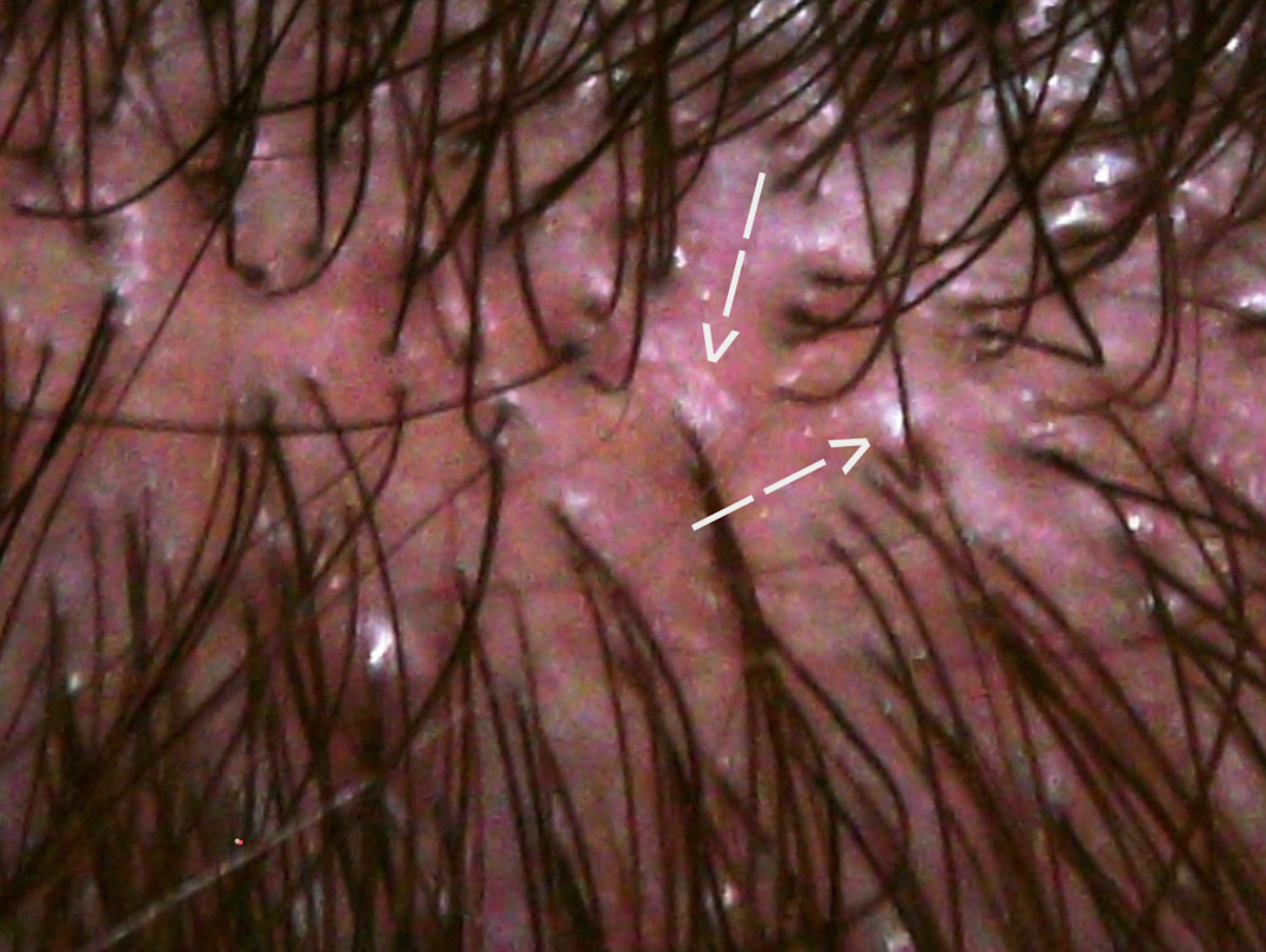"Follicular Prominence" in Early Lichen Planopilaris: What is it?
A Closer Look at “Follicular Prominence” in Lichen Planopilaris
Lichen planopilaris is an immume based hair loss condition that had the potential to lead to permanent hair loss in affected areas if untreated. It is important to identify lichen planopilaris as early in its disease course as possible.
The early stages in of lichen planopilaris can be difficult to spot. If patients have significant redness and alarming symptoms like itching, burning and tenderness most dermatologists will certainly consider this as a possible diagnosis.
The challenge is detecting “early” LPP and detecting LPP in those patients that don’t really have many symptoms or don’t have much in the way of redness (ie anything more than what seborrheic dermatitis might cause).
Early LPP sometimes presents with increased daily shedding, redness of the scalp and symptoms of itching or burning or tenderness.
Follicular Prominence in LPP
Early LPP can sometimes show a feature known as “follicular prominence.” It’s not difficult to understand what this looks like - one simply needs to grab onto a hair on his or her own arm or frontal scalp hairs and gently pull upwards. The tiny “dome” or “mound” that is created in the skin is mimicking the phenomenon of follicular prominence. We have all seen “goose bumps” or “goose flesh” which is a different type of follicular prominence albeit the pathophysiology is entirely different than the follicular prominence seen as part of LPP.
Schematic Diagram showing dome shaped mound typical of follicular prominence.
Follicular prominence in LPP comes from the thickened follicular epithelium that can can seen on biopsy along with the hyperkeratosis (scaling) that is present. Specifically, early LPP shows a reactive epidermal and follicular hyperplasia. The result of these processes is a dome or mound in early disease stages. Many diseases can cause follicular prominence so LPP is not the only one. But the clue is an important one and not to be missed.
An example of “follicular prominence” is shown in the photo below:
Up close image of scalp showing follicular prominence.
This article was written by Dr. Jeff Donovan, a Canadian and US board certified dermatologist specializing exclusively in hair loss.


